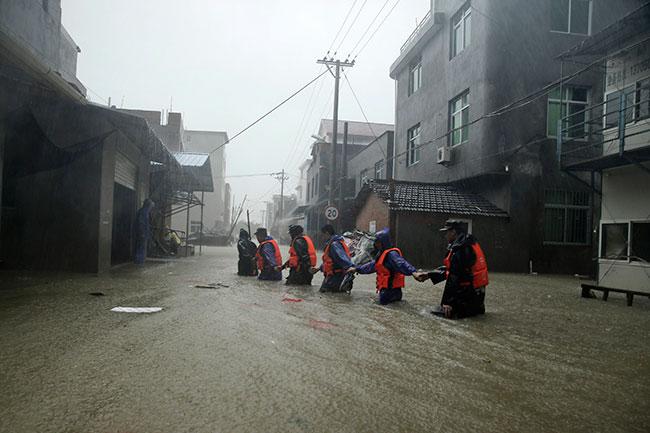The sleeping giant stirs: Where does China stand on climate change?
 Kharo-la Glacirer in Tibet. Pic: Einar Fredriksen (Flickr CC)
Kharo-la Glacirer in Tibet. Pic: Einar Fredriksen (Flickr CC)
FOR three decades, the People’s Republic of China has been burning vast amounts of coal as it industrialized at breakneck speed. The results have been mixed.
Industry-led economic growth has pulled hundreds of millions out of poverty. On the other hand, pollution in Chinese cities is hazardous. Air quality in the industrial city of Shenyang resulted in a code red emergency warning from the local Environmental Protection Bureau only last month.
China’s changing landscape
Climate change is transforming vast areas of Chinese territory. Tibet’s pastures are becoming a desert. So are parts of Inner Mongolia. Desertification has already forced hundreds of thousands to relocate from grasslands around Beijing.
Meanwhile, increased flooding plagues the eastern and southern parts of the country, while sea levels erode its coastlines.
Glaciers have been retreating and permafrost melting.
11 dead, 13 missing in central #Chinafloods | goo.gl/YW0Spd
According to a new scientific report by the Chinese government, named the “Third National Climate Change Assessment Report”:
- Temperatures have risen by 0.9 – 1.5 degrees C or 1.6 – 2.7 F between 1909 and 2012
- If current emissions limits are met, this century will see a rise of 2.7 – 2.9 degrees C or 4.9 – 5.2 F
- Total precipitation could increase by 2 – 5 percent this century, yet with less water retained by soil and rivers due to higher temperatures
- Risks to agriculture include hotter summers, increased pests and less reliable rainfall, though growing seasons could lengthen for some crops
- Between 1980 and 2012, coastal sea levels in China rose by an average of 2.9 mm
- Sea levels of the East China Sea off Shanghai could rise from 7.5 – 14.5 cm over the next 30 years
- Each 1 cm increase of sea level = 10 m loss of coastline
(source: New York Times)
Chinese people are less concerned about climate change, but support a global deal
A recent survey by the US Pew Research Center found that among the citizens of 40 countries, concern about climate change was lowest in China, at only 18 percent compared to a global average of 54 percent. The authors of the survey report were stumped as to why.
That said, over two thirds of Chinese citizens support a global deal on climate change and tellingly, respondents considered air pollution to be a chief concern among domestic issues.
Air pollution, as an immediate health concern for hundreds of millions, is a far more urgent issue for most Chinese than climate change. Additionally, many of the same measures that could reduce air pollution can also be employed to limit greenhouse gas emissions and other climate forcers.
China’s climate stance
In the build-up to the UN climate summit in Paris, Chinese envoy Xie Zhenhua outlined the PRC’s position for the talks. They include:
- Support for a binding global deal on climate change with full international participation
- The need to establish an international mechanism for climate change response post 2020 (when the UNFCCC expires), based on fairness and with a priority of financial and technological support for developing nations
- A response to climate change linked to development leading to transition to low carbon economies, aided by technology, research and development
- A resolution for a transfer of wealth and technology from developed nations to developing nations with the aim of cutting emissions
(source: China Dialo



